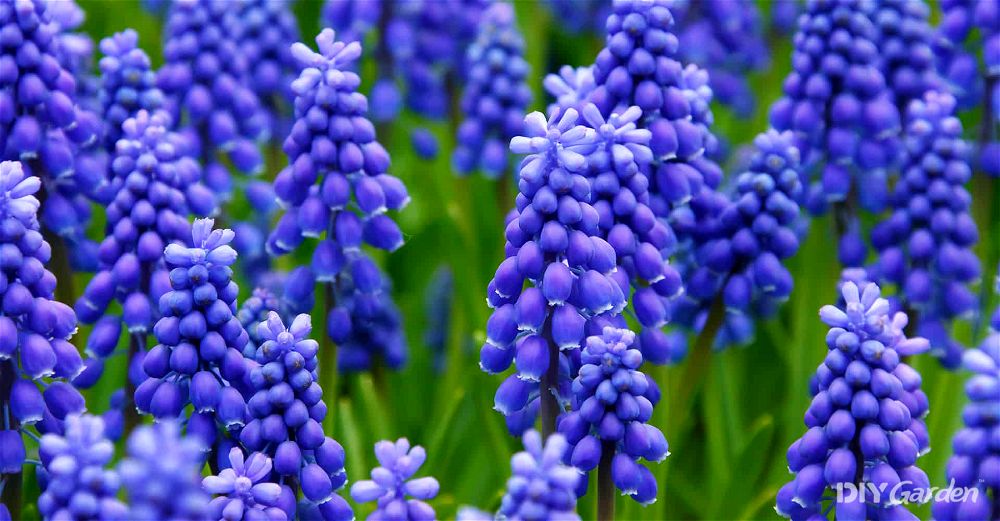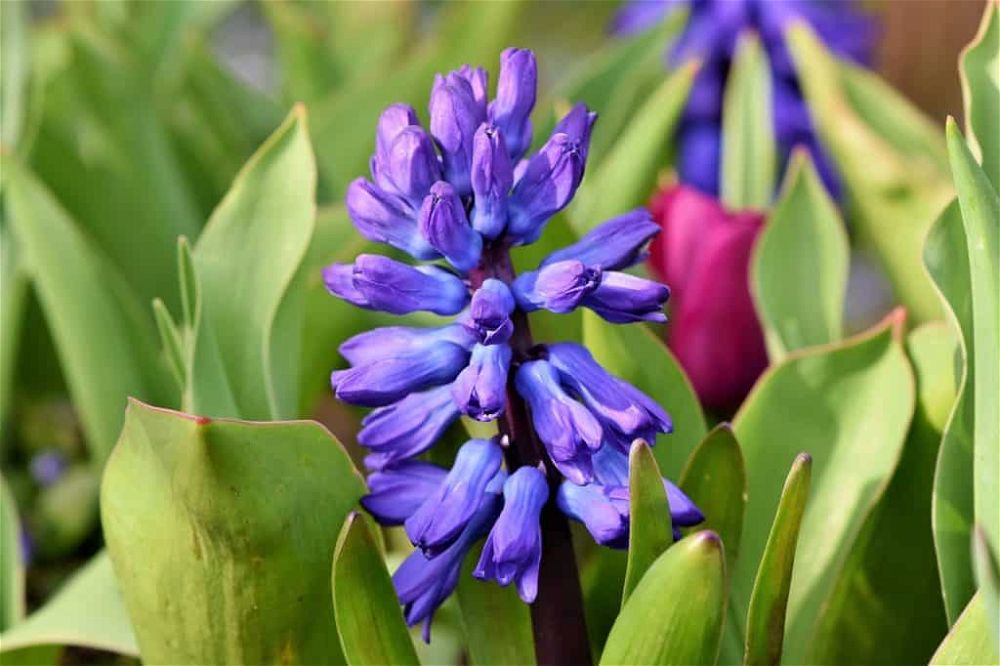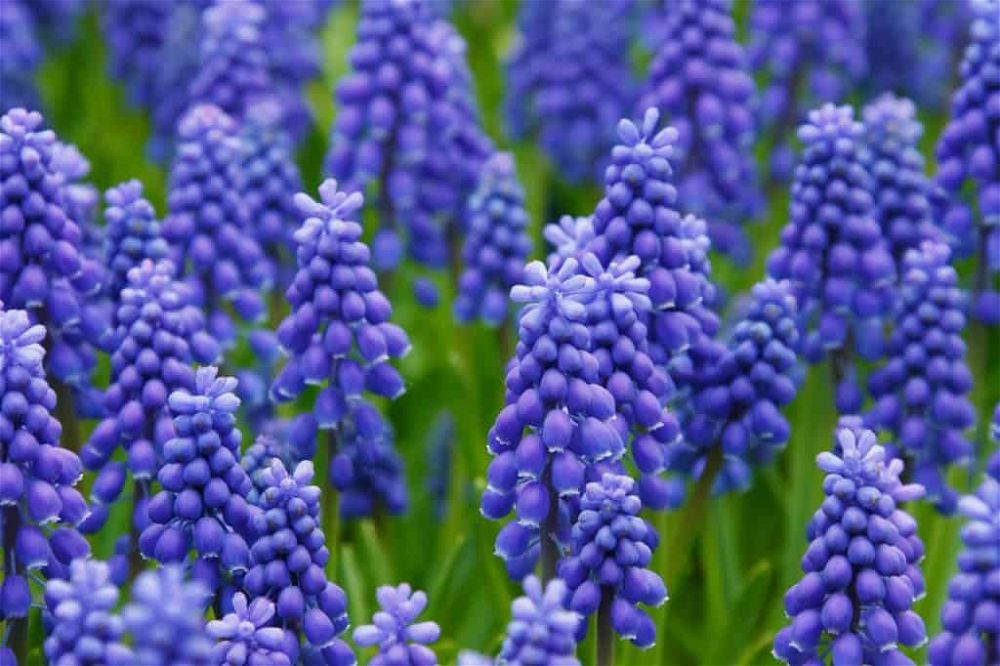
Jump to a Section
Plant Overview
| Common Name | Hyacinth |
|---|---|
| Scientific Name | Hyacinthus |
| Plant Family | Asparagaceae |
| Origin | Hyacinths are native to the eastern Mediterranean including Turkey, Turkmenistan, Iran, Iraq, Lebanon and Syria. It is also widely naturalized in many other areas including Europe, Korea, North America and central Mexico |
| Height | This depends on the variety, but most hyacinths reach a mature height of around 15-30 cm (6 to 12 inches) tall |
| Light | Full sun or partial shade |
| Temperature | The plants need a spell of cold weather to flower which is why they are usually planted in autumn |
| Hardiness | Full hardy |
| Soil | Any well-drained soil |
| Fertiliser | Use a slow-release bulb fertilizer |
| Propagation | By seed or bulb offsets |
| Pests | Occasionally aphids and slugs, however these plants are generally pest free |
| Difficulty | Easy |
Hyacinths are a delightful plant to grow for a burst of spring colour and fragrance. They can be grown in pots, window boxes and borders in groups to provide a lovely spring display. They are a great choice for growing in containers as they are quite compact with lots of flowers. Having them around a seating area allows you to enjoy their wonderful fragrance, too. They come in a range of colours from white, through pinks, blues and to the deepest reds and purples and usually flower in March to April. They can also be grown indoors. By forcing the bulbs, you can even have them flowering indoors at Christmas.
This plant gets its name from, the Greek hero named hyacinth whose blood became the hyacinth plant.
This guide will explain how to grow and take care of these popular spring bulbs
Hyacinth Care
H. Orientalis do not require much care when planted outside. As the plants originate in the mountains of Turkey, they are used to poor, stony soil and blasting summer temperatures followed by freezing winter ones. However, a little attention will keep them flowering with lovely stems of bushy flowers.
Light requirements
Plant your bulbs in a position where they will get full sun or part shade. Indoor grown bulbs need bright but cool conditions.
Water requirements
The plants are usually put in the ground in autumn and start to grow in early spring. They usually get all the water they need at this time from rainfall. However, it is worth ensuring they are watered if there is a dry spell in autumn to help them get established. Avoid overwatering them as this can cause the roots to rot.
Soil requirements
These plants will grow in any well drained soil.
Fertilizer requirements
Sprinkle some slow release bulb fertiliser around your plants in spring. This will ensure they have plenty of nutrients to enable them to produce flowers the following year. Avoid over fertilising these plants as this can lead to floppy growth and blooms that fall over.
Planting
Growing hyacinths outdoors
The best time to plant hyacinth bulbs outdoors is autumn, ideally September or October. They will then begin to grow in early spring and flower in March or April.
Clear the area of all weeds and dig in some organic matter such as well-rotted manure to provide nutrients and aid drainage.
It is advisable to wear gloves when handling hyacinth bulbs as they can irritate the skin. The bulbs and plants should also be kept out of reach of children and animals as they contain toxins.
The bulbs should be planted around 10 cm (4” deep) and spaced around 8 cm (3 inches) apart. If you are planting a temporary display you can plant the bulbs a little closer, around 5cm (2 inches) apart is ideal. Cover them with soil and firm in with your hands. As long as the soil is moist they will not need watering.
Growing hyacinths in containers
Hyacinths are ideally suited to growing in pots. For a seasonal display you can use any multi-purpose compost. However, if they are to stay permanently in the pots then a soil-based compost will be a better choice. You may also like to incorporate some horticultural grit to provide good drainage. Plant them 10 cm (4 inches) deep and cover with soil. Firm in and water. Keep the soil moist to help them establish, however avoid overwatering as this can cause the bulbs to rot.
Growing Hyacinths indoors
Hyacinths are also well suited to growing indoors where they will fill your home with their heady scent. They also grow well in the cool environment of a conservatory or porch. A pot of hyacinths in the hallway is a lovely scented welcome to your home. You could even put one in the smallest room.
Hyacinth bulbs need a chilling period, in order to bloom, so if growing indoors you will either need to purchase pre-chilled bulbs or chill them yourself. These bulbs will give you a lovely spring display.
Most garden centres also sell hyacinth bulbs that have been heat-treated to make them flower early. Planting this type of bulb should give you flowers at Christmas and the New Year.
Choose a container big enough to hold the bulbs you want to plant so that they are close but not touching. The container does not have to be too deep. Put a layer of compost in the bottom of the container and spay it with water so it is nice and moist. Put the bulbs on top of the soil and then fill in the space and almost cover the bulbs. Just the tip of the bulb should be visible at the surface. You can also cover the soil and top of the bulb with some gravel to ensure water does not sit on the bulb. Leave an inch or so at the top of the container to allow for watering.
They then need to be kept in a cool, dark place such as a garage or cellar. Cover the pots with black plastic to keep out the light. Check them weekly and water them if the compost feels dry. Do not water too much as this could cause the bulbs to rot.
After about ten weeks the hyacinths will begin to shoot and you can remove the plastic. When the shoots are 5- 7 cm or so tall then you can move the pots into the house. Put them in a cool, bright place. Keep watering them as the soil dries out. Flowering should begin in about three weeks.
Growing hyacinths in hyacinth vases
You can buy special hyacinth vases for growing these bulbs. These vases have a cup shaped top in which the bulb sits, and its roots develop into the water of the vase below. You will need to use chilled bulbs, available from garden centres and online. Position your bulb so its base sits just above the water. Put the vase in a cool dark place for about six weeks to allow the roots to form. Keep an eye on the plant and top up the water if necessary. Do not allow the bulb to sit in the water, though as this will cause it to rot.
After about six weeks the bulb will begin to shoot. Once the shoot is around 7 cm tall, move the glass indoors and position it in a cool but bright place. Turn the glass by half a turn each day to prevent the stem from leaning towards the light and toppling over.
Maintenance
Once your hyacinths have flowered, you can remove the dead flower spike, but allow the leaves to die back naturally as they will provide the nutrients for next years flowers. Indoor grown hyacinths can be planted out after flowering and should flower again the following spring.
Your hyacinth bulbs may not produce such dense flowers after their first year. However, they still provide an attractive display.
After a few years your hyacinths may become depleted. Every few years it is wise to dig up your hyacinth patch, discard and remove any rotting or diseased bulbs and replant the bulbs in a new area. Dig in some organic matter or slow release bulb fertilizer before you plant them to help them get the nutrients they need to continue to flower well.
Looks good with
Hyacinths flower in March and April and look wonderful mixed with other spring bulbs that flower around this time such as daffodils and crocuses. They also provide a splash of colour against more muted tones such as those of hellebores.
Pruning advice
These plants do not require pruning. Simply cut back the flowering spike once it begins to go brown. Allow the leaves to die back naturally as these will provide the nutrients for next year’s growth.
Hyacinth Propagation
Most people buy hyacinth bulbs from a garden centre or online. This is the most reliable way to grow these plants and will ensure good blooms. Hyacinth bulbs are relatively cheap, too, so for most people this is the way to go. However, if you are feeling adventurous or curious, you can try propagating hyacinths by seed or bulb offsets.
Propagation by seed
You can save the seeds of your hyacinth after it has flowered. Sprinkle the seed onto seed compost in a seed tray and just cover with compost. Put the tray in a cool greenhouse or cold frame. They can take a long time to germinate and grow, but they should be ready for transplanting after about a year.
Propagating by bulb offsets
Mature bulbs will develop small offset bulbs around the base of the bulb. Dig up your hyacinth bulbs and take any of these new bulbs off to plant up separately.
Common Hyacinth Problems
Hyacinths are generally not susceptible to may pests and diseases. However, keep an eye out for the following as they do occasionally occur.
Pests
Hyacinths are rarely affected by pests. Occasionally, in very mild springs, slugs can be a problem. Forced hyacinths can be more susceptible to aphid (greenfly and blackfly) attack so watch out for these insects and scrape them off if they appear.
Diseases
The most likely disease to affect your bulb is a fungus that will cause the bulb to rot. Soft areas can allow spores into the bulb. Keeping them from becoming waterlogged is the only solution.
Hyacinth Varieties
The variety of hyacinth that is usually grown in gardens is Hyacinth Orientalis, commonly known as Dutch hyacinth. This variety comes in a range of cultivars.
H. Orientalis ‘Blue Jacket’ has single flowers that are deep blue with a purplish stripe. It reaches a height of 25 cm (210 inches).
H. Orientalis ‘Carnegie’ has single flowers of a snow-white hue. It has a deliciously sweet scent and long-lasting flowers.
H. Orientalis ‘City of Haarlem’ has single, creamy-yellow flowers and reaches 30 cm (12 inches) in height.
H. Orientalis ‘Delft Blue’ has single, china-blue fragrant flowers and reaches un ultimate height of 30 cm (12 inches) .
H. Orientalis ‘Jan Bos’ has single flowers of a deep, reddish-pink. This is an RHS Award of Garden Merit winner. It grows to 15 cm (6 inches) high.
H. Orientalis ‘Yellow Queen’ is a lovely yellow cultivar with a good scent and has been awarded a RHS Award of Garden Merit. It reaches a mature height of 30 cm (12 inches).
H. Orientalis ‘Miss Saigon’ another RHS Award of Garden Merit winner, this cultivar has deep wine-coloured flowers. It reaches 20 cm (8 inches) in height.
H. Orientalis ‘Blue Giant’ is one of the largest single flowered varieties and is sky-blue with darker blue veins.
There are also other less traditional types of hyacinth now on the market including double hyacinths and multi stemmed varieties. ‘Hollyhock’ is a nice double variety with dark pink blooms. ‘Blue Festival’ is a lovely multi stemmed variety that is reminiscent of a bluebell.
FAQs
Some varieties are rather top heavy by nature. You might like to try a few varieties and see which does best in your home. Shorter varieties are often sturdier. You might also try moving them to a cooler position. It is especially important to keep them away form direct sources of heat such as radiators. They also need plenty of light and will bend toward the light which can exacerbate the drooping problem. Turn them round one quarter turn each day so that they receive even light.
Too many nutrients can also lead to weak floppy growth so don’t overdo it with the fertiliser. You could also try planting the bulbs a little deeper to give them a more stable foundation. Failing that the only option is to support your hyacinth flower spikes. Bamboo skewers work pretty well, and you can even use these to support a bulb grown in a vase.
Hyacinths need a period of about sixteen weeks of cold conditions in order to flower. Because you planted yours quite late, they may not have had enough time in the cold. It is best to plant hyacinth bulbs outside in September or October. But all is not lost, if you leave them where they are they will flower next spring.
This seems to be what happens when you plant indoor hyacinths outside. However, they sometimes come back better the next year. Do not cut back the leaves until they have gone brown as these will provide the nutrients for next year. You could also try using a bulb fertiliser to give them some extra nutrients and this might result in showier blooms next year.



Share